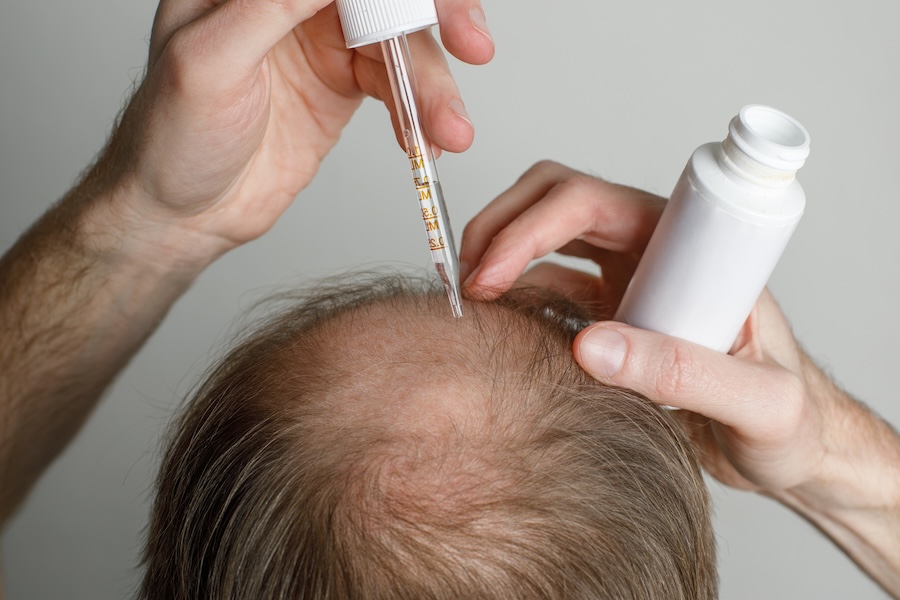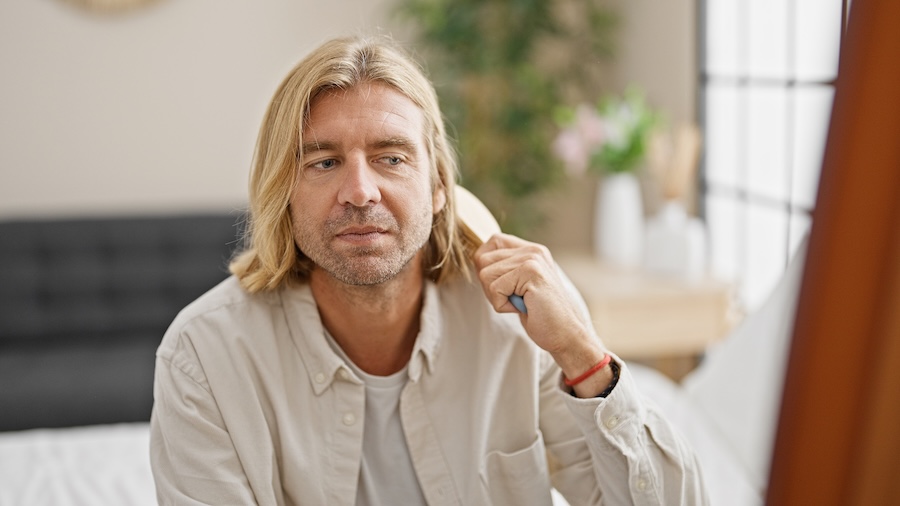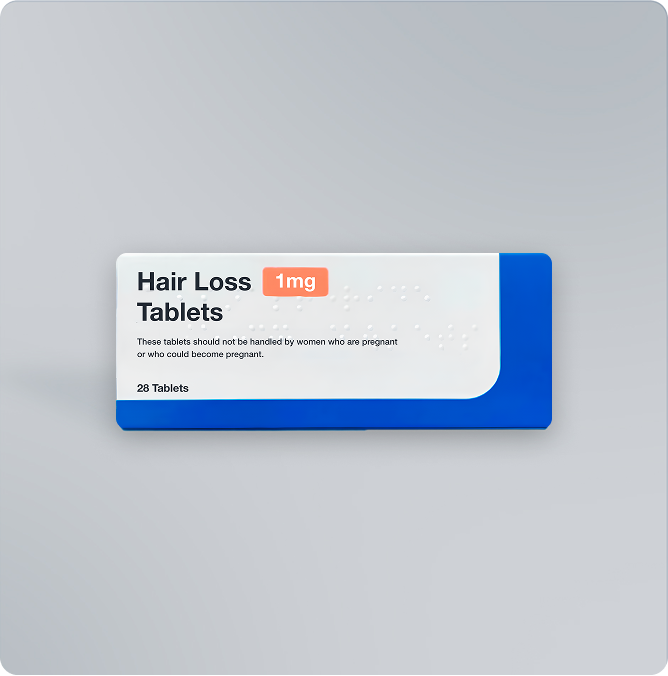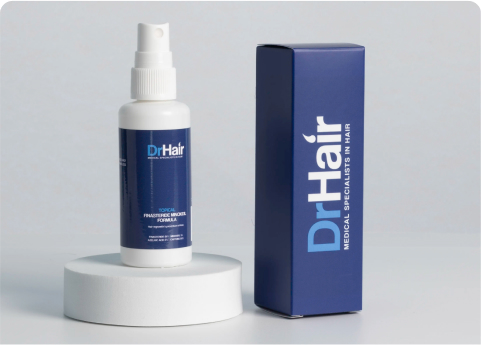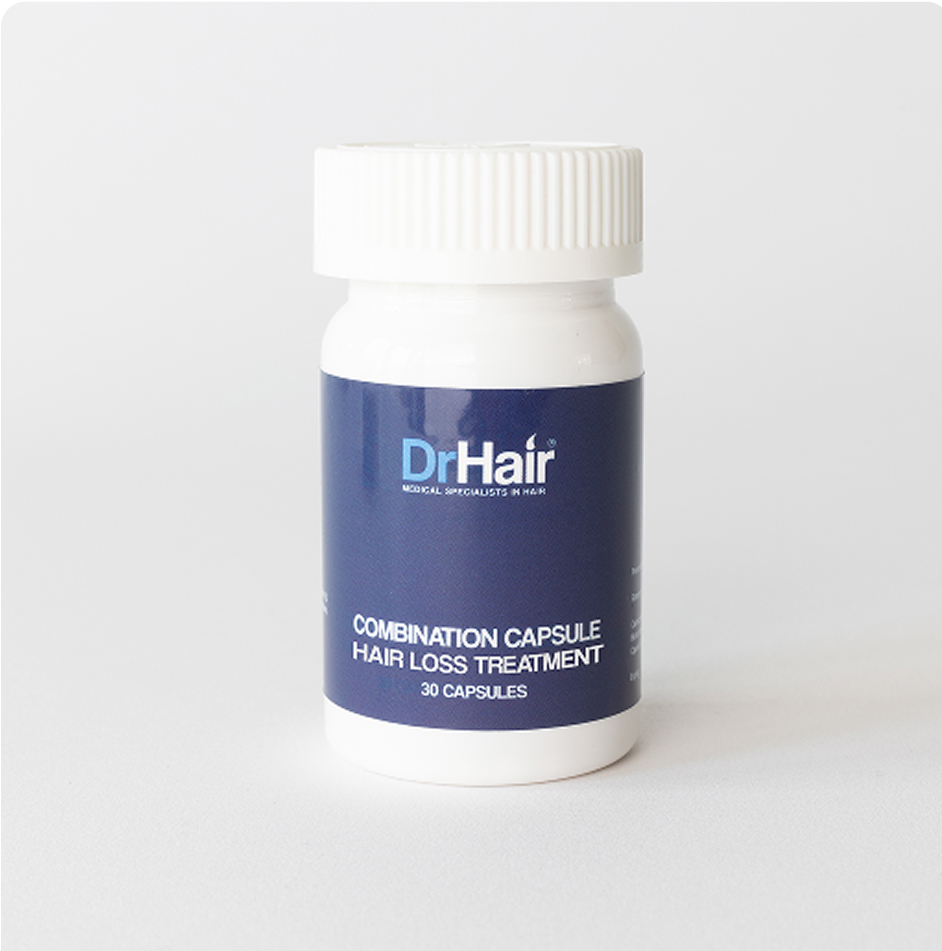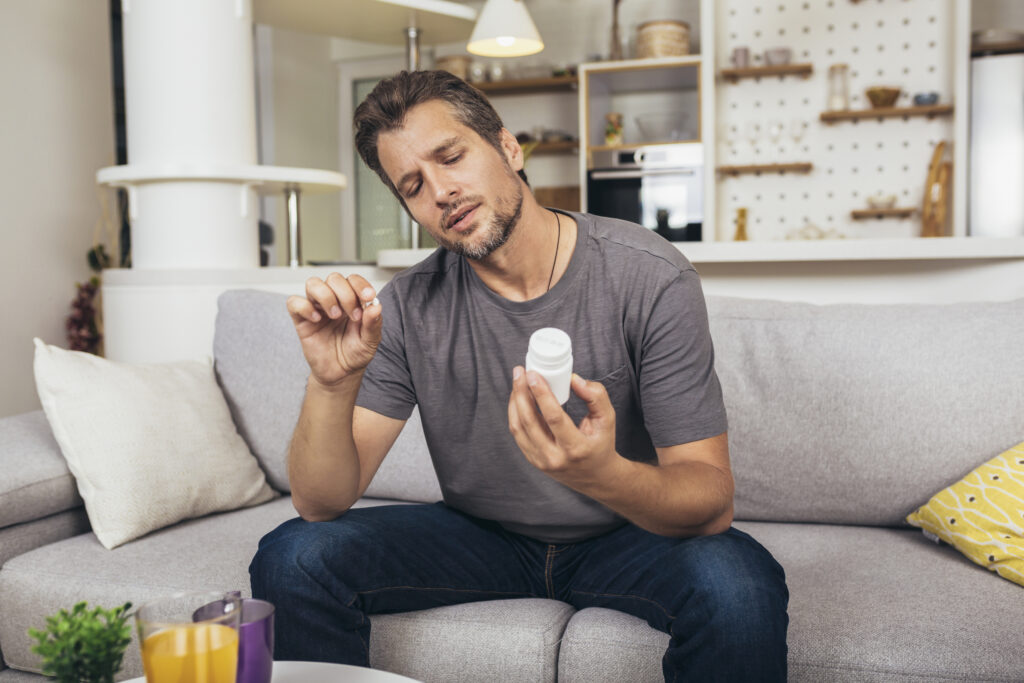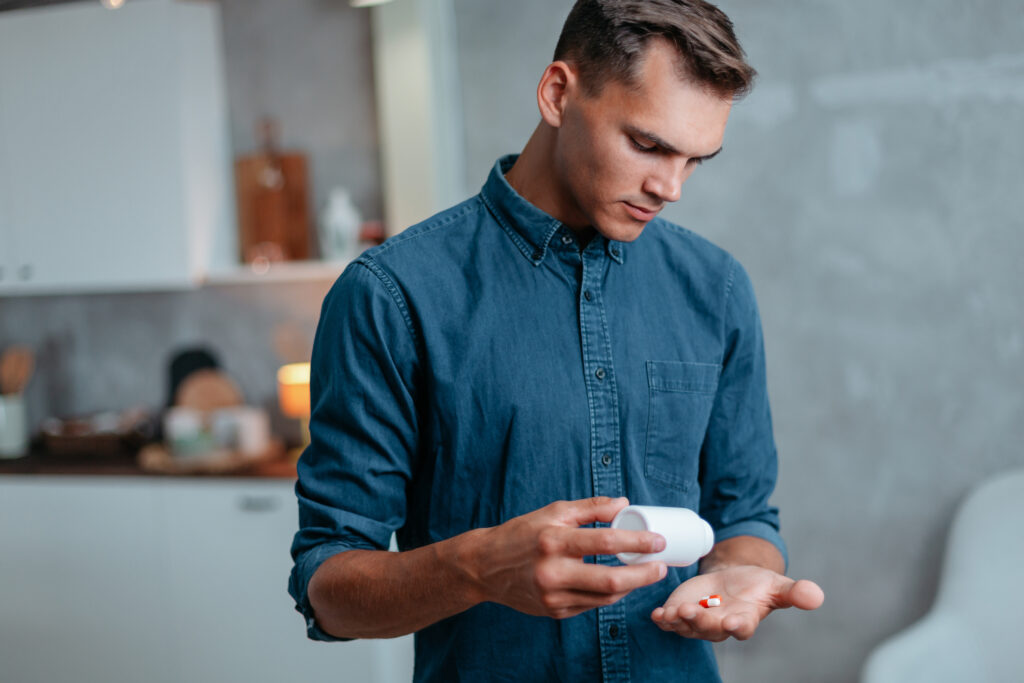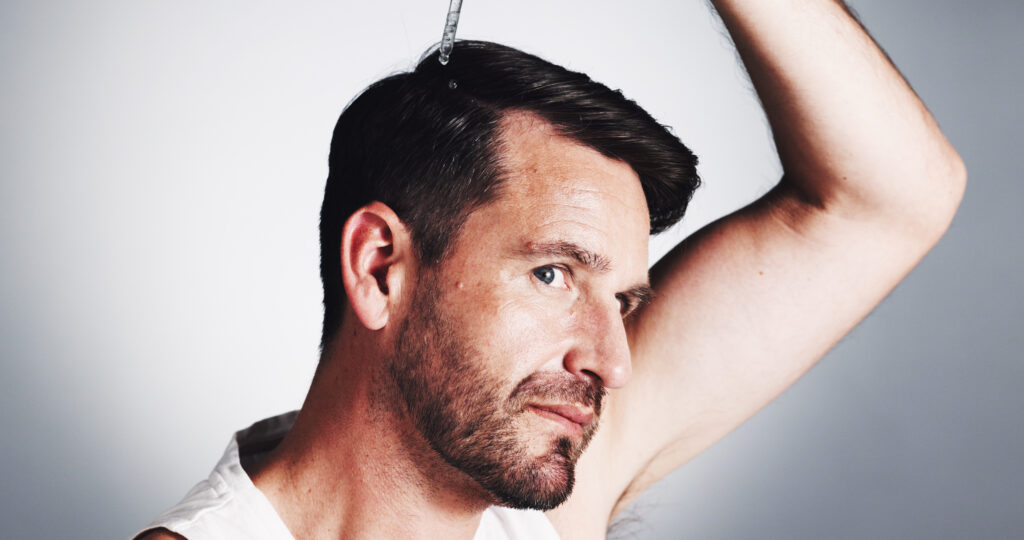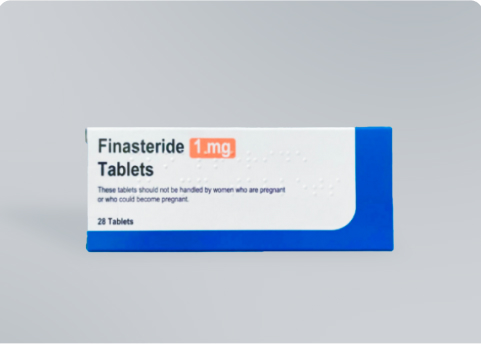Minoxidil is one of the world’s most popular hair loss treatments. It’s proven to help improve symptoms of hair loss stemming from various types of alopecia, including male pattern baldness, female pattern hair loss, alopecia areata, and even chemotherapy-related hair loss.
Minoxidil helps with hair loss via several different mechanisms, from improving circulation to reversing follicle miniaturisation. Here, you’ll learn exactly how minoxidil helps with hair loss and why it’s one of the best treatments for a receding hairline or thinning crown.
How does minoxidil work for hair loss?
Minoxidil affects hair growth in several ways [1-4]:
- Increasing scalp blood flow.
- Extending the growth phase of the hair growth cycle.
- Reversing hair follicle miniaturisation.
Let’s take a look at how each of these factors helps tackle hair loss.
1. Minoxidil increases scalp blood flow
Every hair follicle on your head (and the rest of your body) requires a healthy supply of oxygen and nutrients to produce hair. Without this, your hair stops growing.
Oxygen and nutrients reach your hair follicles via the circulatory system — that is, your blood. When applied to your scalp, minoxidil dilates the blood vessels beneath the skin, encouraging more blood to flow to the follicles [1]. This increases the amount of oxygen and nutrients reaching your follicles, stimulating hair growth.
While minoxidil increases blood flow, it can actually lower your blood pressure. It’s rare for topical minoxidil to lower blood pressure but it can happen.
2. Minoxidil extends the growth phase
Hair grows in cycles. Each follicle goes through a cycle of growth, rest, and shedding, before the growth phase starts again.
Minoxidil has been shown to prolong the anagen (growth) phase of this cycle [2-3]. Research suggests this is because minoxidil activates β-catenin activity in the dermal papilla cells of your follicles [3].
β-Catenin, or catenin-beta-1, is a protein that occurs naturally in your body. β-catenin activity is present in the dermal papilla cells of actively growing hair follicles. Animal studies have shown that removing β-catenin from the derma papilla leads to premature catagen and subsequently earlier shedding [3].
Minoxidil appears to stimulate β-catenin activity, keeping more hair in the growth phase and therefore reducing hair loss.
3. Minoxidil reverses hair follicle miniaturisation
Permanent baldness — such as male or female pattern hair loss — is usually caused by hair follicle miniaturisation. This happens when a hormone called dihydrotestosterone (or DHT) binds to receptors in your hair follicle, causing it to miniaturise. As the follicle gets smaller, it produces less hair, until the hair stops growing altogether.
Minoxidil can reverse this miniaturisation process on the hairline and crown (to a limited extent). Unlike DHT blockers like finasteride, which reduce the amount of DHT produced by your body and/or scalp, one study found that applying minoxidil foam could reverse follicle miniaturisation.
That’s because minoxidil can reduce the expression of genes involved in inflammation and increase the expression of hair keratin-associated proteins [4]. These proteins are essential for strong, healthy hair shaft formation.
How long does minoxidil take to work?
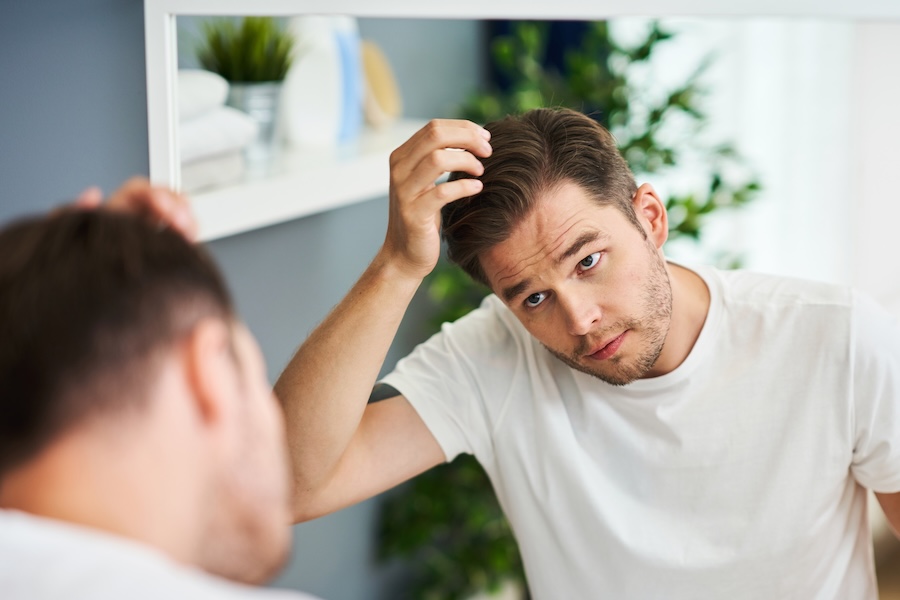
With consistent twice-daily application of minoxidil, you can see visible hair regrowth within 3-6 months. Bear in mind that some minoxidil users go through a period of temporary hair shedding around two weeks after starting treatment.
This can be alarming, but it’s actually a sign that the minoxidil is working. Within a few weeks, any temporary hair loss from minoxidil will stop and your hair should start to regrow thicker and fuller than before. Learn how to apply minoxidil to get the best results.
Minoxidil may also cause a rash, redness, and mild skin irritation in the first few weeks of use.
How well does minoxidil work?
Minoxidil is generally an effective hair loss treatment, particularly in the earlier stages of male pattern baldness. One comprehensive study of more than 900 participants with male pattern baldness found minoxidil to be effective in almost 84% of patients [5].
But it’s generally accepted that minoxidil is less effective than finasteride when it comes to treating male pattern baldness [6]. For best results, a combination of the two medications is often recommended [7]. DrHair supplies two different types of combined minoxidil and finasteride for hair loss:
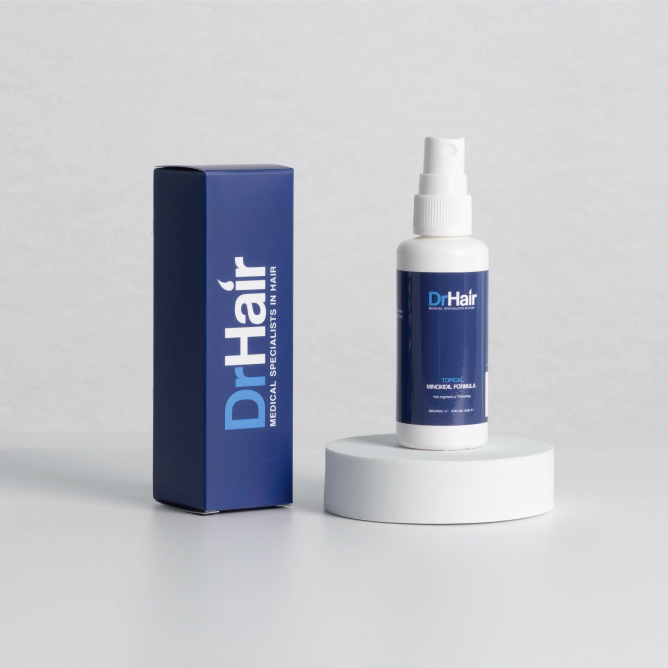
Recommended
Finasteride (1mg) + Minoxidil 5% (60ml)
Inhibit DHT production to halt hair loss and promote hair growth.
Ready to try minoxidil?
If you haven’t tried minoxidil to tackle your hair loss before, it’s a great place to start. At DrHair, you can buy one month’s supply of minoxidil, allowing you to test out the treatment without committing to a lengthy subscription. And if you decide to continue with minoxidil, we guarantee the best price — with even more savings when you opt for a 3, 6, or 12 month subscription.
Get started with a one-minute eligibility assessment. Buy 5% minoxidil directly from DrHair.
FAQs
Learn more about when and how to use minoxidil for best results in these FAQs.
Minoxidil is licensed for treating male pattern baldness in the UK. But studies suggest it can also improve symptoms of many other types of hair loss, including [8]:
- Female pattern hair loss
- Alopecia areata
- Traction alopecia
- Chemotherapy-related hair loss
- Postpartum hair loss
- Stress-related hair loss
If you’re unsure if minoxidil is right for you, book an online consultation with our medical specialists today.
Unfortunately, you need to continue to use minoxidil if you want to retain your new hair. If you stop applying minoxidil, your hair loss is likely to resume.
Some lab and animal studies have established a link between minoxidil and testosterone metabolism [9-10]. But there’s not yet any research establishing the effect of minoxidil on testosterone in humans; in fact, it’s generally accepted that minoxidil is unlikely to have a significant effect on your testosterone levels.
It’s never too late to try minoxidil, but it’s best to use it in the early stages of hair loss for the biggest impact. If you have long-term or widespread hair loss, your results may be limited.


